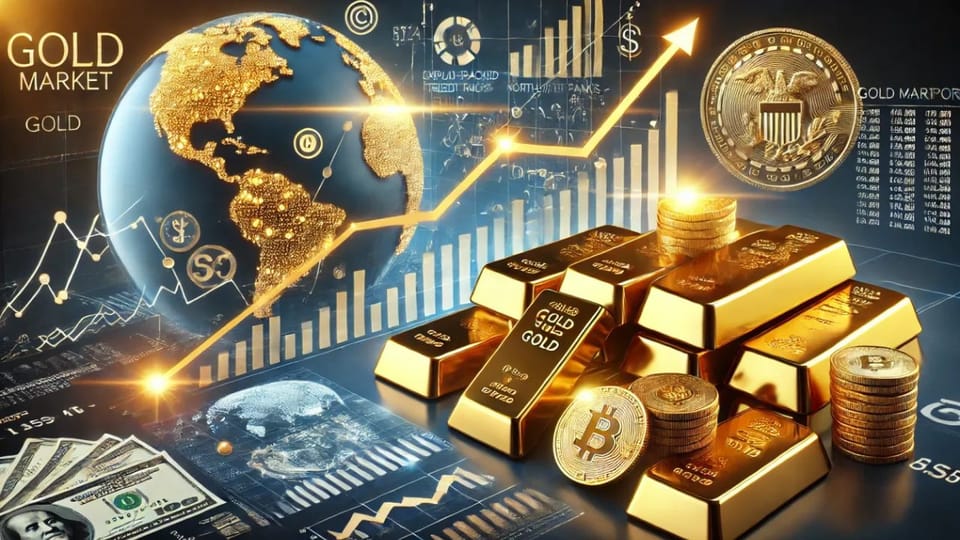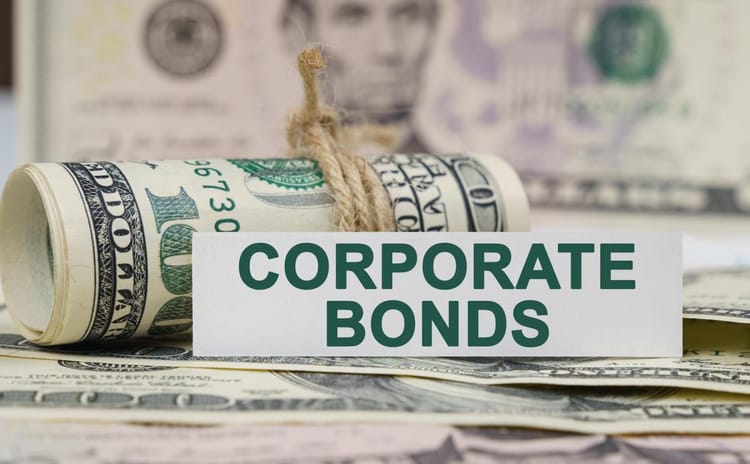US Fed Rate Cut Impact On Gold

Impact of Fade Rate Cuts on Gold:
- The Federal Reserve (Fed) is the central bank of the United States, and its decisions on interest rates can significantly impact global financial markets, including gold. When the Fed cuts interest rates, it can lead to various consequences for investors, including changes in the value of the U.S. dollar, inflation expectations, and most importantly, the price of gold. In this article, we will explore how Fed rate cuts influence gold prices, why this relationship exists, and how it can affect both investors and the broader economy.
What are Fed Rate Cuts?
- Before diving into the relationship between gold and rate cuts, let's briefly explain what a Fed rate cut means. The Fed controls the "federal funds rate," which is the interest rate at which banks lend to each other overnight. By raising or lowering this rate, the Fed can either slow down or stimulate economic activity.
- When the economy is slowing down, the Fed may cut interest rates to make borrowing cheaper. This encourages businesses to invest and consumers to spend, thus stimulating the economy.
- When the economy is growing too fast, the Fed may raise rates to prevent inflation and overheating of the economy.
Why Do Gold Prices React to Fed Rate Cuts?
- Gold has been a valuable asset for centuries, primarily used as a store of value and a hedge against inflation and economic instability. Several key factors explain why gold prices tend to react when the Fed cuts interest rates:
Weaker U.S. Dollar:
- Gold is priced in U.S. dollars. When the Fed cuts interest rates, the dollar tends to weaken because lower rates make it less attractive to hold dollar-denominated assets. As the value of the dollar declines, gold becomes cheaper for investors who hold other currencies, increasing demand and pushing up gold prices.
Lower Opportunity Cost:
- Gold doesn’t generate interest or dividends, so when interest rates are high, investors may prefer income-generating assets like bonds. When the Fed cuts rates, the opportunity cost of holding non-yielding gold decreases, making it a more attractive investment.
Inflation Hedge:
- Rate cuts can stimulate the economy, sometimes leading to inflation. Gold has historically been seen as a good hedge against inflation. When inflation expectations rise due to rate cuts, investors flock to gold as a way to preserve their wealth, driving up its price.
Global Economic Uncertainty:
- Fed rate cuts are often a sign that the U.S. economy is struggling. This can lead to global economic uncertainty, increasing the demand for safe-haven assets like gold. Investors prefer gold during times of crisis because of its stability.
How Fed Rate Cuts Affect Gold Prices: A Detailed Look
Immediate Reaction in Gold Prices:
- The gold market tends to react quickly to any changes in Fed policy. When a rate cut is announced, gold prices may rise almost immediately as traders anticipate the effects of a weaker dollar and increased inflation expectations.
Longer-Term Impact:
- Over the longer term, the impact of a Fed rate cut on gold can vary depending on other factors like global economic conditions, geopolitical risks, and investor sentiment. However, in general, lower interest rates tend to support higher gold prices because of the factors mentioned earlier.
Fed's Communication and Market Expectations:
- It's important to note that markets often "price in" Fed decisions in advance. This means that if traders expect a rate cut, gold prices may rise ahead of the actual announcement. Similarly, if the Fed signals future rate cuts, gold prices may react even if no immediate cut is made.
Real Interest Rates and Gold:
- Real interest rates are another important factor. These are adjusted for inflation and are calculated by subtracting the inflation rate from the nominal interest rate. When the Fed cuts rates and inflation rises, real interest rates often turn negative. Negative real interest rates reduce the opportunity cost of holding gold, further supporting its price.
Historical Examples of Fed Rate Cuts and Gold Prices:
Looking at historical examples can give us a clearer picture of the relationship between Fed rate cuts and gold prices:
2008 Global Financial Crisis:
- During the 2008 financial crisis, the Fed cut interest rates aggressively to stimulate the economy. Gold prices soared as investors sought safe-haven assets amid economic uncertainty. From 2008 to 2011, gold prices nearly doubled.
2020 COVID-19 Pandemic:
- The COVID-19 pandemic also led to a series of Fed rate cuts. In response, gold prices hit record highs in 2020 as the U.S. dollar weakened and inflation expectations grew due to massive government stimulus measures.
Impact on Investors and the Economy:
Gold as a Safe-Haven Investment:
- For investors, Fed rate cuts often signal a shift towards a more volatile or uncertain economic environment. This is why gold is often viewed as a safe-haven investment in such times. Investors may increase their gold holdings to protect themselves from market instability, leading to higher gold prices.
Diversification Benefits:
- For those with a diversified portfolio, holding some gold can help balance out the risk in other asset classes like stocks or bonds. During periods of Fed rate cuts, these other assets may become more volatile, while gold can provide stability.
Impact on Gold Miners and Producers:
- Fed rate cuts not only affect the price of gold but also influence the profitability of gold miners and producers. A rise in gold prices can boost the share prices of companies involved in gold mining, making them attractive to equity investors.
Conclusion:
- The impact of Fed rate cuts on gold prices is complex, but the general trend is that lower interest rates support higher gold prices due to a weaker dollar, lower opportunity costs, and increased inflation expectations. For investors, understanding this relationship can provide valuable insights into portfolio diversification and risk management during times of economic uncertainty. Gold, with its historical role as a safe-haven asset, continues to play a key part in global financial markets, especially when the Fed moves to cut rates.
FAQs on Fed Rate Cuts and Gold Prices:
What is the US Fed rate cut?
- The US Federal Reserve on Wednesday reduced the benchmark federal funds rate by 0.5 percentage points, bringing it down to a range of 4.75% to 5%. This decision was made “in light of the progress on inflation and the balance of risks," according to a statement by the Federal Open Market Committee. Before this cut, the rate had remained in the 4.25% to 4.50% range since July 2023.
How much did the Fed cut rates today?
- The Federal Reserve cut its target interest rate to 4.25%-4.50% on Wednesday, a 0.5 percentage point reduction from its previous level, which had been the highest in 23 years.
Why does gold tend to rise when the Fed cuts rates?
- Gold prices rise during Fed rate cuts because lower interest rates reduce the opportunity cost of holding gold. Additionally, a weaker U.S. dollar and inflation expectations push investors toward gold as a store of value.
How the Fed's interest rate decision will affect the gold market?
- The Fed's interest rate decisions impact the gold market by influencing the value of the U.S. dollar and inflation expectations. Lower interest rates weaken the dollar, making gold cheaper for foreign investors and boosting demand. Additionally, lower rates reduce the opportunity cost of holding gold, often leading to higher gold prices. Conversely, higher rates strengthen the dollar, reducing gold's appeal.
What will happen if the Fed cuts rates?
- If the Fed cuts interest rates, borrowing becomes cheaper, which can stimulate economic activity. It typically weakens the U.S. dollar, as lower rates make dollar-denominated investments less attractive. This often leads to higher inflation expectations. For the gold market, a weaker dollar and rising inflation fears can drive up gold prices, as investors turn to gold as a safe haven and inflation hedge. Lower rates also reduce the opportunity cost of holding non-yielding assets like gold, making it more attractive to investors.
Does a Fed rate cut always lead to higher gold prices?
- Not necessarily. While rate cuts often support higher gold prices, other factors like geopolitical risks, investor sentiment, and economic conditions can also influence the gold market.
What is the relationship between inflation and gold prices?
- Gold is often considered a hedge against inflation. When inflation expectations rise due to factors like rate cuts, investors buy gold to preserve their purchasing power, which drives up its price.
How do real interest rates impact gold prices?
- Real interest rates, which are nominal rates adjusted for inflation, play a crucial role in gold prices. When real interest rates are negative, the opportunity cost of holding gold decreases, making it more attractive to investors.
How does the Fed rate cut affect banks?
- When the Federal Reserve sets the Fed Rate at 2%, it means banks can borrow from each other overnight at that rate. If the Fed raises the rate, interest rates for loans like mortgages and car loans usually increase. On the other hand, if the Fed lowers the rate, it tends to result in lower interest rates for those loans.
Can Fed rate hikes decrease gold prices?
- Yes, when the Fed raises interest rates, it strengthens the U.S. dollar and increases the opportunity cost of holding gold, leading to lower demand and potentially lower prices.
How quickly do gold prices react to a Fed rate cut?
- Gold prices can react almost immediately to a Fed rate cut, as traders and investors quickly adjust their positions based on the news. However, longer-term trends depend on a variety of factors.
How can I invest in gold during periods of Fed rate cuts?
- Investors can buy physical gold, gold ETFs, or gold mining stocks during periods of Fed rate cuts to hedge against inflation and economic uncertainty.
Is gold a better investment than stocks during Fed rate cuts?
- It depends on the investor’s risk tolerance and goals. Gold is generally more stable during economic uncertainty, while stocks can offer higher returns but come with more risk.
We hope that you like this content and for more such content Please follow us on our social site and YouTube and subscribe to our website.
Manage your business cash flows and payable/receivables using our Bahi Khata App




Comments ()